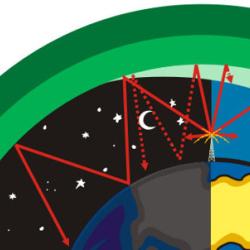Source Institutions
Source Institutions
Add to list Go to activity
Activity link broken? See if it's at the internet archive

In this activity, learners will listen to as many radio stations as possible to discover that AM radio signals can travel many hundreds of miles at night. Learners log the call signs, locations, and quality of the transmissions on a data table. This resource includes information about how AM radio transmissions differ at day and night, the ionosphere, the history of call letters, and NOAA Weather Radio. Note: this activity must be completed during the evening or early in the morning before sunrise and learners must have access to an AM radio.
- Under 5 minutes
- 1 to 2 hours
- free per student
- Ages 8 - 18
- Activity, Lesson/Lesson Plan
- English
Quick Guide
Materials List (per student)
- Radio Station Reception Form
- Pen/pencil
- Access to AM radio
Subjects
-
Earth and Space Science
-
Earth Processes
- Weather and Climate
-
Earth Structure
- Atmosphere
-
Earth Processes
-
Physical Sciences
-
Electricity and Magnetism
- Electromagnetic Fields
-
Vibration and Waves
- Sound
- Diffraction and Interference
-
Electricity and Magnetism
-
Engineering and Technology
-
Technology
- Information and Communication
-
Technology
-
Mathematics
-
Data Analysis and Probability
- Data Analysis
- Data Collection
- Data Representation
-
Data Analysis and Probability
-
The Nature of Science
-
The Scientific Process
- Gathering Data
-
The Scientific Process
-
The Nature of Technology
-
Technology and Society
- Impacts of Technology
- Technology and History
-
Technology and Society
Informal Categories
- Electronics
- Music
- Nature and Environment
Audience
To use this activity, learners need to:
- read
- hear
Learning styles supported:
- Involves hands-on or lab activities
Other
Components that are part of this resource:
This resource is part of:
Access Rights:
- Free access
By:
Rights:
- All rights reserved, National Weather Service,
